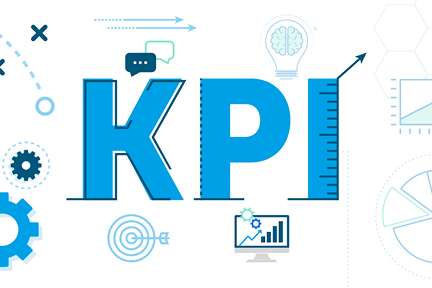As the days grow shorter and end of the year lists start appearing in our feeds, it’s natural to take a retrospective view on the past year and to begin thinking about what we could do differently for 2018 regarding data analytics.
Where do you want to be at this time next year? How will you get there? And how will you measure your success?
Now is the time to form meaningful key performance indicators (KPIs) that will guide you through the coming year and have your association meeting its goals.
Association Analytics COO Julie Sciullo, along with Sean Hewitt, our Director of Data Governance and Adam Rosenbaum, Director of Information Systems at CASE—will be presenting on this topic at the ASAE Technology Conference in December.
Here’s a sneak peek of what they’ll cover in their session and some tips on how to use data analytics to build useful KPIs.
What Are KPIs?
A KPI is something that can be counted and compared. It provides evidence of the degree to which an objective is being attained over a specified time.
For instance, if your goal in 2018 is to raise the public awareness of your association, then KPIs might be to run X number of ad campaigns that received X number of impressions in the first two quarters.
Here are some questions to ask to determine if the KPIs you have are working in the right way:
- Can it be counted in the form of a number, percentage or currency?
- Can it be compared to what is optimal?
- Is the evidence observed in the same way by all stakeholders?
- Is it contributing to a significant organizational objective?
- Is it being measured over a specified period of time?
What Makes a KPI Meaningful?
A meaningful performance indicator ties directly to a strategic objective. Though keep in mind, making the connection between an ambitious objective and winnowing it down to a measurable indicator that’s manageable and measurable is not always an easy task.
If only it were as simple as telling a team to climb up a hill, where you have a precise, calculated performance metric. As you progress up the hill, you can track the distance travelled, the number of teammates who are still climbing, and how far left you have to go. At the end of the journey, you’re either at the top and you accomplished your goal, or you fell short.
The objectives your association wants to achieve probably aren’t as literal as mountain climbing, but it’s worth taking the time and mental effort to figure out what hills you want to climb and then breaking the journey up into measurable pieces.
In the end, the meaningful KPIs are those that move your mountains into molehills, breaking up the bigger goal into attainable chunks that can be effectively measured to make sure you’re on track and that the actions you’re taking are having a positive effect.
How Can Data Analytics Help Inform KPIs?
A meaningful strategic goal (and the KPIs that correspond to it) balances on three important points: strategy, data, and the ability interpret that data. What ties it all together and really allows an organization to take action is understanding what you want to get out of accomplishing that goal and why you want to accomplish it in the first place.
Using and analyzing data to define your strategy takes away assumptions and cuts to the center of the goal’s purpose. When you can look at what the data is telling you and combine it with the “why” of your goal, you can better define the next action steps to take.
Interested in learning more about our session at ASAE Tech or how data analytics can inform your strategic goals? Sign-up for our monthly newsletter.



